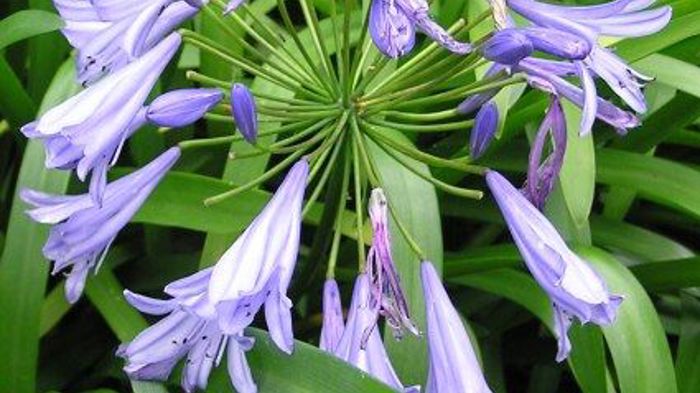Agapanthus


Agapanthus
What does it look like?
Agapanthus grows in clumps with arching, strap-like green leaves with a watery sap. It has thick, long, white rhizomes (roots), and produces purplish-blue or white flowers on top of tall stalks during summer. The seeds are held within a 3-sided capsule that is about 5cm long.
Agapanthus flourishes in coastal, frost-free (or lightly frosted), temperate climates and is commonly cultivated in public and private gardens. It grows wild in urban areas, on roadsides, coastal cliffs, stream edges and forest margins.
Why is it a problem?
Agapanthus tolerates a wide range of soil types and growing conditions, forming dense monocultures that exclude native plants and modify plant communities.
Strong, fleshy roots spread underground to create large clumps and it can also re-grow from root fragments. Plants mature quickly, producing large numbers of seeds (up to 4,000 per flower head) that germinate readily.
Control methods
Banning Agapanthus praecox from sale and distribution does not include sterile varieties.
Physical control
Removal of the bulb-like base of the plant by hand is effective. A trowel or spade may be required for deeper bulbs or larger infestations.
Herbicide control
- Cut and stump treat with a gel containing either the active ingredient picloram (e.g. Vigilant) or metsulfuron-methyl (e.g. Metgel).
OR - Spray with 60ml triclopyr (300g/L e.g. Grazon) +10ml penetrant per 10L water
OR - Spray with 200ml Dicamba (100g/L e.g. Banvine) + 10ml penetrant per 10L water.
Two or three repeat applications will be necessary at 6-8 week intervals for effective control.
CAUTION: When using any herbicide or pesticide, PLEASE READ THE LABEL THOROUGHLY to ensure all instructions and safety requirements are followed.
Related information
Management programme
Sustained control
Rules
More images

Photo credit: Auckland Council

